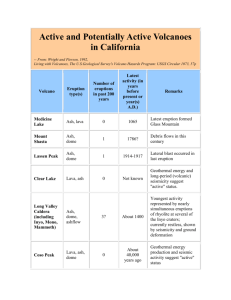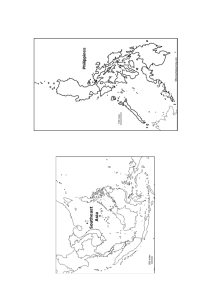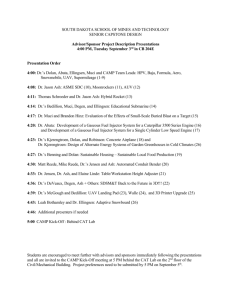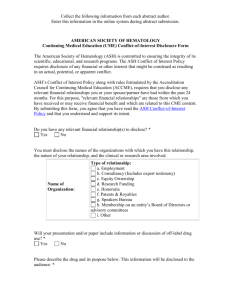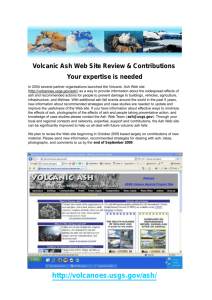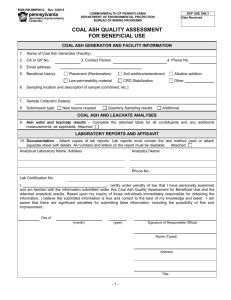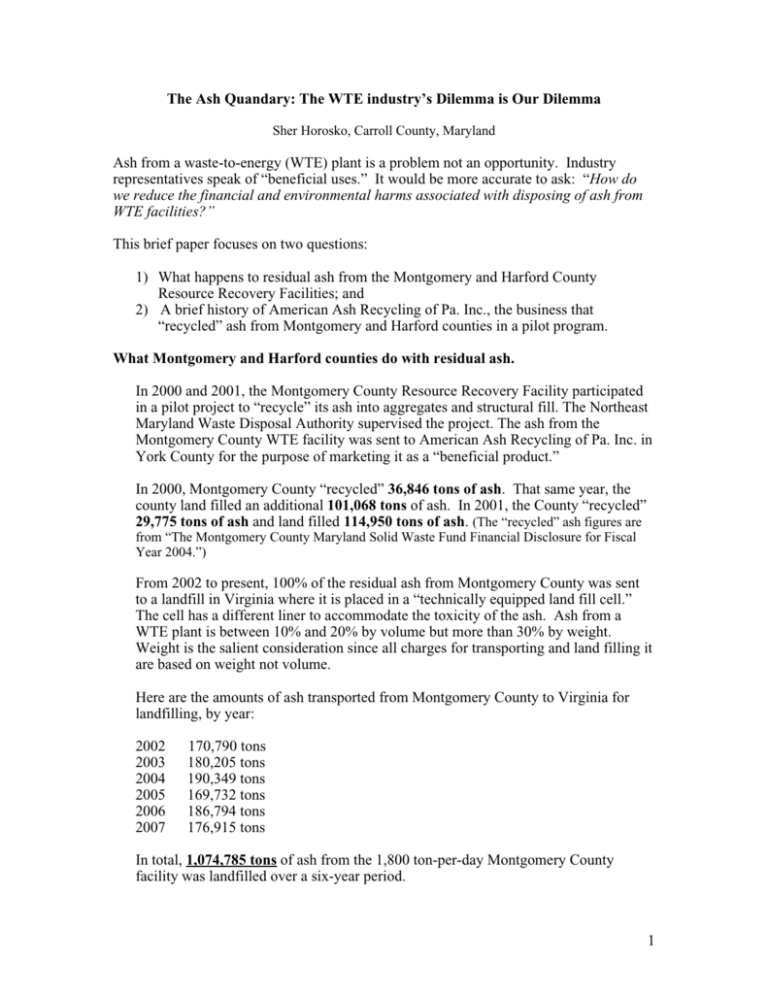
The Ash Quandary: The WTE industry’s Dilemma is Our Dilemma
Sher Horosko, Carroll County, Maryland
Ash from a waste-to-energy (WTE) plant is a problem not an opportunity. Industry
representatives speak of “beneficial uses.” It would be more accurate to ask: “How do
we reduce the financial and environmental harms associated with disposing of ash from
WTE facilities?”
This brief paper focuses on two questions:
1) What happens to residual ash from the Montgomery and Harford County
Resource Recovery Facilities; and
2) A brief history of American Ash Recycling of Pa. Inc., the business that
“recycled” ash from Montgomery and Harford counties in a pilot program.
What Montgomery and Harford counties do with residual ash.
In 2000 and 2001, the Montgomery County Resource Recovery Facility participated
in a pilot project to “recycle” its ash into aggregates and structural fill. The Northeast
Maryland Waste Disposal Authority supervised the project. The ash from the
Montgomery County WTE facility was sent to American Ash Recycling of Pa. Inc. in
York County for the purpose of marketing it as a “beneficial product.”
In 2000, Montgomery County “recycled” 36,846 tons of ash. That same year, the
county land filled an additional 101,068 tons of ash. In 2001, the County “recycled”
29,775 tons of ash and land filled 114,950 tons of ash. (The “recycled” ash figures are
from “The Montgomery County Maryland Solid Waste Fund Financial Disclosure for Fiscal
Year 2004.”)
From 2002 to present, 100% of the residual ash from Montgomery County was sent
to a landfill in Virginia where it is placed in a “technically equipped land fill cell.”
The cell has a different liner to accommodate the toxicity of the ash. Ash from a
WTE plant is between 10% and 20% by volume but more than 30% by weight.
Weight is the salient consideration since all charges for transporting and land filling it
are based on weight not volume.
Here are the amounts of ash transported from Montgomery County to Virginia for
landfilling, by year:
2002
2003
2004
2005
2006
2007
170,790 tons
180,205 tons
190,349 tons
169,732 tons
186,794 tons
176,915 tons
In total, 1,074,785 tons of ash from the 1,800 ton-per-day Montgomery County
facility was landfilled over a six-year period.
1
In an earlier memo, we sent you figures outlining the cost of transporting the ash from
Montgomery County to Virginia in FY 2007. That figure was $6.9 million and
represented the total cost of transporting the ash and land filling it in Virginia.
Councilwoman Praisner’s office in Montgomery County provided us with this
information.
A review of Montgomery County financial data leads one to question why the County
would not “recycle” its ash for beneficial purposes if the County could save money by
doing so. Why would the County pay $6 million per year, on average, to transfer the
residual ash to Virginia if “recycling” ash for “beneficial use” is a viable option?
According to the Fall 1998 issue of Waste Watch, a publication of the Northeast
Maryland Waste Disposal Authority, Harford County also participated in the
American Ash Recycling of Pa. Inc. pilot program. The article says the county was
interested in ash recycling “to further extend the life of its landfill.”
According to the authority’s website, the ash from the Harford County Resource
Recovery Facility is now “screened to capture metals for recycling” and then used “as
alternative daily cover” at the Harford County and Baltimore City Quarantine Road
landfills. The use of ash as daily cover is characterized as a “beneficial use” by the
Northeast Maryland Waste Authority. Harford County counts the ash utilized as
daily cover toward its recycling rate. In 2007, 39,000 tons of ash from the Harford
facility was used as daily cover, with the majority of it being used in Baltimore.1
While allowable, it is a stretch to designate ash spread over a landfill as a recyclable
product. “Recycling” is defined as diversion from disposal. The ash is still going to
the landfill. The EPA says repeatedly that all landfills will eventually leak. Toxic
ash from a WTE plant, spread as daily cover, will eventually find its way into our
groundwater and it will do so more easily than placing it in a secure cell.
It is unlikely that Fredrick will be able to accept the ash from the proposed Regional
facility for daily cover at its landfill owing to capacity constraints. Will the Carroll
Commissioners agree to spread the ash on the Northern Landfill for daily cover? If
not, will we follow the path of Montgomery County officials and pay upwards of $6
million per year to transfer and landfill the ash out of state?
While we do not view the ash as having “beneficial uses,” it is clear that WTE
advocates have not secured “beneficial use markets” for Montgomery or Harford
counties. Why should Carroll and Frederick citizens feel confident that aggregate
markets would be located for ash from the proposed facility? As you will see below,
the PA Department of the Environment recently decided the American Ash Recycling
Company of York can no longer use the ash from Waste to Energy plants as a
“beneficial aggregate.”
1
Harford County disposed of 39,000 tons as daily cover and land filled 10,000 tons in 2007. The State
requires Harford County to mix the ash with dirt at a 50/50 ratio while allowing Baltimore City to apply the
ash as daily cover without any soil added. The reason for this is unclear. In 2007, Harford municipal solid
waste totaled 360,000 tons with 39,000 tons of ash being attributed toward their recycling rate or 10.8%.
Conversation with Mr. C. Robert Ernst, Recycling Program Manager on 16 January 2008.
2
How can we be sure that Carroll and Frederick citizens won’t have to shoulder
another tax burden and pay the additional fees associated with the transportation and
land filling of ash that Montgomery County citizens have to bear on their property
taxes?
A brief history of American Ash Recycling of Pa. Inc., the business that “recycled”
ash from Montgomery and Harford counties in a pilot program.
Back in 1998, The Northeast Maryland Waste Disposal Authority published two
articles on recycling ash from WTE facilities in its publication Waste Watch. Both
articles reference plans for the American Ash Recycling of Pa. Inc. to establish an
operation in York County to recycle ash generated at the county’s WTE facility for
use in marketable aggregates.
The articles suggest opportunities for Maryland WTE facilities to make similar use of
incinerator ash. As stated above, the Montgomery and Hartford WTE facilities
participated in the American Ash Recycling of Pa. Inc. pilot program. (See enclosed
articles.)
The Pennsylvania Department of the Environment (PA DEP) had granted American
Ash Recycling of Pa. Inc. a permit “to process and apply its product AggRite for
beneficial use.” On August 8th of 2007, the Council of the City of York passed a
resolution opposing the application of American Ash Recycling of PA, Inc to extend
its general operating permit with the PA DEP. A link to that resolution, detailing all
the problems the community experienced with the ash, is included in this document.
It offers insight into what our communities may anticipate if faced with an ash
residual totaling over 150,000 tons per year.
In October of 2007, the PA Department of the Environment denied American Ash
Recycling of Pa. Inc. its application for renewal. In a press release, Thomas Fidler,
deputy secretary for waste, air and radiation management, stated: “American Ash
Recycling has failed to demonstrate that AggRite is suitable for use as a structural or
construction material, and has failed to comply with the terms of its existing permit.”
Essentially, the PA DEP said the company failed “to meet the beneficial use standards
outlined in DEP’s regulations.” (See enclosed statements from the PA DEP).
In December of 2007, the PA DEP approved American Ash Recycling of Pa. Inc.’s
application to remove metals from incinerator ash and use the ash as daily landfill
cover. However, it restricted the company to storing no more than 4,900 tons of ash at
its facility at any one time. Its previous permit allowed the company to store 180,000
tons of ash. The department also specified that the company has to keep the ash in
buildings or containers to prevent dispersal by wind. Residents complained wind
swept the dust into their neighborhoods and affected their breathing and that dust
containing dioxins migrated to the Little Conewago Creek. The department asked
the company to evaluate the feasibility of relocating its operations.
The experiment to turn ash into a “beneficial aggregate” that was managed by the
Northeast Maryland Waste Authority in cooperation with American Ash Recycling
and Harford and Montgomery Counties, failed. The only option left is to characterize
3
ash as a “beneficial daily cover” for a land fill operation. The ash replaces topsoil at a
presumably lower cost. Do we wish to use toxic ash as our daily cover in Carroll?
Or should we stick with topsoil? What poses the least potential for harm?
At the end of the day, the mountain of ash generated from a WTE facility will need to
be land filled. Toxic ash should be placed in a secure cell, not spread about over the
entire surface area. To place it in such a cell would mean two things: a far higher
cost for disposal and the inability to count the ash toward our recycling rate.
Ash from a WTE plant is a burdensome financial and environmental problem, not an
opportunity.
Sher Horosko is a member of Carroll County’s Environmental Advisory Council
4
Enclosures
Enclosure One: Link to the Resolution By the City of York, PA opposing the
application of American Ash Recycling to Extend their General Permit to turn WTE ash
into aggregates. Motion passed.
http://www.yorkcity.org/webcom/PDF/City%20Council/Bills%20&%20Resolutions/A
merican%20Ash%20Opposition%20Resolution.pdf
Enclosure Two:
Two articles from Waste Watch
The Northeast Maryland Waste Disposal Authority WASTE WATCH
Volume 9, Issue 2
Spring 1998
Serving Anne Arundel County, Baltimore City, Baltimore County,
Carroll County, Harford County, Howard County, and Montgomery County
Trends in Ash Residue Beneficial Use
By Brian Parsons, P.E., Project Manager
When it comes to municipal waste combustor (MWC) ash residue, states
such as Pennsylvania and Massachusetts are being creative yet
environmentally conservative with ash beneficial use and disposal
options. In these states, the environmental protection agencies have
issued permits for beneficial use of MWC ash residue. Massachusetts has
limited beneficial ash use to within the boundaries of lined landfills,
while Pennsylvania has been more permissive. Generally, the trend is
toward allowing the beneficial use of ash in landfill closure projects.
The Pennsylvania Department of Environmental Protection (PADEP) issued a
“Beneficial Use Order” in May that encourages using ash residue. The
order approves the use of treated ash in
the following ways:
• Aggregate for base and sub-base material under roads and other paved
surfaces.
• Structural fill material.
• Substitute aggregate in concrete.
• Alternate daily cover for landfills.
According to the Beneficial Use Order, the “American Ash Recycling Corp.
(AAR) reports that there will be no adverse effect on the public or
environment from the beneficial use of treated
ash aggregate when used according to certain conditions”. This spring
the AAR
is scheduled to open a new ash processing facility, located at a quarry
in York County, Pennsylvania, where ash residue from the York County
Solid Waste& Refuse Authority’s Resource Recovery Facility will be
treated and processed.
5
2)
Northeast Maryland Waste Disposal Authority Waste Watch
Volume 9, Issue 4
Fall 1998
Authority Staff and Member Counties
Visit Ash Recycling Plant
By Chris Skaggs and JoAnn Strack
The Authority took representatives of Carroll, Harford and Montgomery Counties
on a tour of the new American Ash Recycling Facility (AAR) in York County,
Pennsylvania this summer. All three jurisdictions were interested in learning
more about the process of recycling ash from waste-to-energy (WTE) plants
into end products suitable for various construction applications.
Recycling technology for WTE ash is relatively new to the solid waste industry
and to date, there are few WTE ash recycling plants operating in the United
States. Carroll County is interested in AAR's operations because the county's
waste currently goes to the York WTE Facility for disposal. The combustion ash
then goes to AAR for processing. Harford County is already involved with AAR in
a pilot program that includes the processing of nearly 5,000 tons of ash
generated from the Harford County WTE Facility. The county is considering ash
recycling to further extend the life of its landfill. Montgomery County also is
investigating ash-recycling technologies.
The group was led on a tour of the enclosed facility, where the sorting of ash
takes place, the plant's control room and the grounds surrounding the plant.
From the control room windows, we observed a series of conveyor systems
moving and sorting the ash, with employees assisting the process at specific
sorting locations. We were then taken on a walk-through of the plant to see the
operations more closely. On close inspection the group was able to see coins
and other interesting pieces of metal being extracted from the ash. What
appeared to be a rooster from a weather vane was pulled from the line while we
were walking through the system of conveyor belts. Inside the plant there was
minimal dust, little standing water and no odors. Overall, the operations were
well organized.
The AAR facility has been operational since June 1998. It is designed to process
up to 140,000 tons of ash per year for one-shift operations, with a maximum
capacity of 240,000 tons per year. The processing incorporates screening,
shredding, magnetic separation, non-ferrous separation and air classification of
the incoming ash. The primary end product of this process is Treated Ash
Aggregate (TAA). TAA has been approved for use by the Pennsylvania
Department of the Environment for road sub-base material as well as aggregate
6
up to 140,000 tons of ash per year for one-shift operations, with a maximum
capacity of 240,000 tons per year. The processing incorporates screening,
shredding, magnetic separation, non-ferrous separation and air classification of
the incoming ash. The primary end product of this process is Treated Ash
Aggregate (TAA). TAA has been approved for use by the Pennsylvania
Department of the Environment for road sub-base material as well as aggregate
in asphalt, concrete and structural fill. A process referred to as WespHix is used
to bind any heavy metals in the TAA, which insures against leaching in future
applications. Ferrous metals and non-ferrous metals, including brass, copper,
aluminum, and coins are separated during processing and pro-vide another
source of revenue. The air classification and screening processes recover
unburned material as a by-product, which is sent back to the WTE facility for
reprocessing.
AAR is strategically located on the site of the York Building Products Quarry. The
two companies have a mutually beneficial relationship. Currently, all of the TAA
produced by AAR is being sold to York Building Products.
Enclosure Three: Two decisions from the PA DEP regarding
American Ash Recyling of York
October 10, 2007
DEP Denies York County Ash Recycling Permit
HARRISBURG (Oct. 10) -- The Department of Environmental Protection today denied
an application by American Ash Recycling of Pa. Inc. to renew its general permit, which
had allowed the company to process and apply its AggRite product for beneficial use.
The department cited problems with the product’s performance and application, along
with a failure to meet the beneficial use standards outlined in DEP’s regulations.
“American Ash Recycling has failed to demonstrate that AggRite is suitable for use as a
structural or construction material, and has failed to comply with the terms if its existing
permit,” said Thomas Fidler, deputy secretary for waste, air and radiation management.
American Ash Recycling produces AggRite by treating incinerator ash from the York
County Resource Recovery Facility. American Ash Recycling’s process reduces the
leachability of heavy metals in the ash.
When DEP issued the original permit in December 1997, AggRite was approved for
beneficial uses as a construction aggregate material and as asphalt and concrete aggregate
provided it met the state Department of Transportation’s respective specifications.
7
At American Ash Recycling’s request, DEP modified the general permit in August 2002
to allow AggRite be used as a bulking agent for sludge or liquid waste, a construction
aggregate material under sidewalks and parking lots, base material for roadway
embankments, and in the production of manufactured brick and blocks.
Fidler noted that American Ash Recycling could not demonstrate AggRite’s
effectiveness for these additional uses.
A number of past and outstanding compliance issues involving the use of AggRite also
exist under the current general permit, which expires Dec. 23.
The American Ash Recycling processing facility has generated more than 500,000 tons
of AggRite, most of which had been stockpiled at a quarry in York. The stockpile was
removed under the terms of a January 2004 consent decree and most of the material has
been removed and taken to Modern Landfill.
Daily Update Home || News by Subject|| Week in Review|| DEP Home
Commonwealth of Pennsylvania, Department of Environmental Protection
DEP Press Office Contact: Susan Rickens, Editor
P.O. Box 2063, Harrisburg, PA 17105-2063
(717) 787-1323
All Rights Reserved
COMMONWEALTH OF PENNSYLVANIA
Dept. of Environmental Protection
Commonwealth News Bureau
Room 308, Main Capitol Building
Harrisburg, PA 17120
FOR IMMEDIATE RELEASE
12/24/2007
CONTACT:
John Repetz
Phone: (717) 705-4904
DEP APPROVES AMERICAN ASH RECYCLING PROCESS REQUEST
HARRISBURG -- The Department of Environmental Protection has approved the
application by American Ash Recycling of Pa. Inc. to process municipal waste
incinerator ash for use as cover at landfills.
8
“This approval authorizes AAR to remove metal from incinerator ash generated during
the burning of municipal waste at the York County Solid Waste and Refuse Authority's
facility in West Manchester Township and then send the ash to landfills, where it will be
used as daily cover,” said DEP South central Regional Director Rachel Diamond
In October, DEP denied AAR’s request to renew its general permit for processing and
beneficial use of treated ash, citing problems with the product’s performance and
application, along with the company’s failure to meet the beneficial use standards
outlined in DEP’s regulations.
The approval of the application allows for the recovery of ferrous and non ferrous metals
from incinerator ash for recycling, according to Diamond.
In addition, DEP imposed additional restrictions on the processing operation such as
requiring AAR to store all ash within buildings or containers to prevent wind dispersal of
the ash and limiting the amount of ash on site to no more than 4,900 tons. AAR is also
required to submit an ash control plan and a storm water management plan within 30
days, and to submit a study evaluating the feasibility of relocating the operation to
alternative sites.
9


